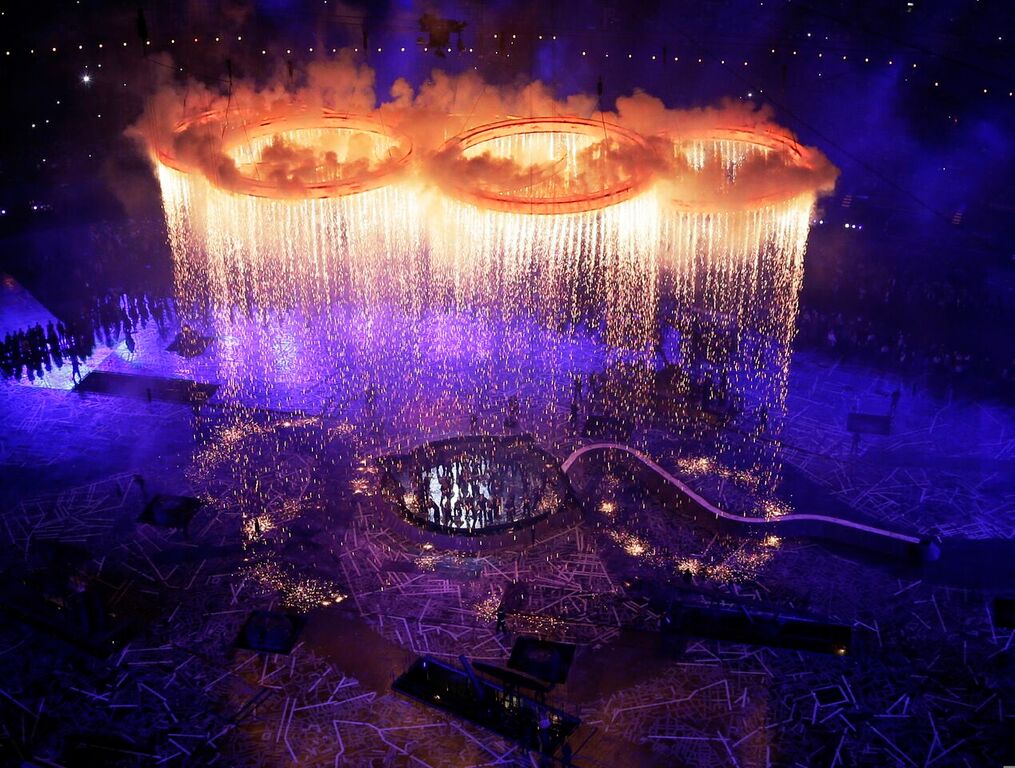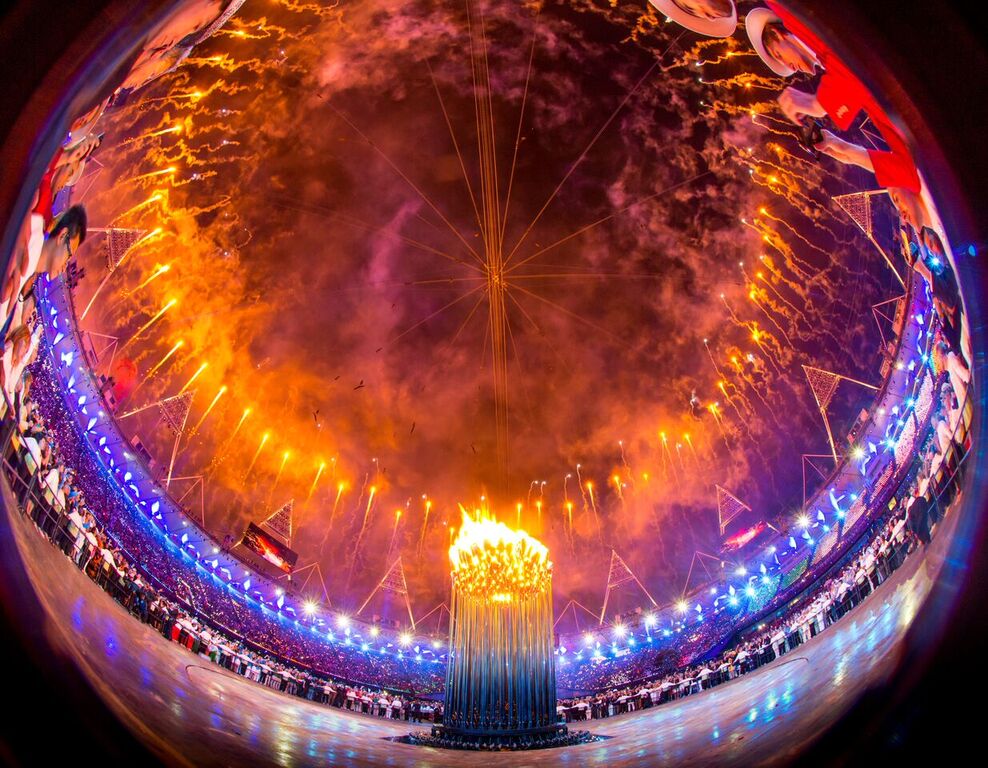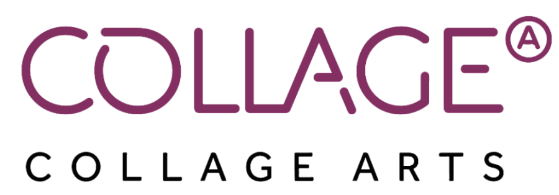
Wonder Works interview
interview by George Jackson
There’s always a buzz at the Chocolate Factories in Wood Green with over 200 artists and companies working creatively every day. Take a peek inside the world of Wonder as we speak to Piers Sheppard, founder and director of Wonder Works Ltd.
When did you move to Wood Green as a business? And what has being based here allowed you to achieve?
We came Winter 2009/10. The Chocolate Factory gave me an environment where I could expand the business and not have to pay huge rents while worrying about electricity bills and business rates, which really helped in the early days when it was just me. We’ve slowly grown the business over the last five years to the point now where we have got too big, which is good. The Chocolate Factory helped me make the transition from working in my bedroom to the point where I could take it more seriously.

What was your job before you founded Wonder Works?
I’ve always worked in the events industry doing technical coordination for large scale events so either design, or coordinating between designers and suppliers. It was more as a freelancer, and I think the move to the Chocolate Factory was the step from being a freelancer where I only had to get work for myself to saying, ‘this is going to be a business and we are going to employ more people and grow.’
The services at the Chocolate factory helped you turn it from a freelance project into a business?
Yes: it was very important to me to have an office where clients could come, where I could have meetings, where I could have an address that clearly wasn’t my home address. It sends out a message that you are being more professional, and more business-like in your dealings with clients.
There are many other artists based here, it is a set of studios, to what extent does that impact on your work?
It did in two ways. Though not a huge amount in terms of working with existing artists and with people based here. However, we did some work with a photographer who has taken photos for our website who is based on the fourth floor and we’ve done some graphic design with an artist based here. It is more that you feel a solidarity with the artists that are here, you feel comfortable and that this is a supportive environment, which to me was very attractive. You are in a creative space. Our business is half technical but half creative, we’re coming up with very technical solutions to creative problems so hearing music is good, and we have a lot of music studios on our floor. There a lot of music events here, and hearing singers sing and guitarists play and drummers drum is a constant reminder for us that what we design has to be used by a band. If we had been in a big corporate office somewhere we would have missed that.
You have a core staff and then you work with artists and contractors, technical people, and you’re based in this very artistic space, to what extent then is collaboration important to your business?
We have a very small full time staff of four of us and then we will scale up, for the Olympics for example, to about 700-800 people. For the Secret Cinema Star Wars: The Empire Strikes back last summer we went from 4 to 12 to 150 for the summer. So collaboration is absolutely at the core of what we do, including often reaching out to meet new people. We are looking at new technologies or new groups of people who do something in a show that we’ve not seen before because everyone wants something which is unique and spectacular. That could be spectacular because it is very aesthetically pleasing or because it is clearly very technically innovative.

To what extent are you an artist, and to what extent are you a scientist?
Ultimately, my role is to support very creative people but also to deliver reality. So it’s fifty fifty. I have to work with people who are coming up with ideas that may be difficult to implement or hard to understand. It can be very easy to talk about a creative idea but it is our role to ground it, and deal with all the physical things that nature has, which sometimes creative people don’t have to address. So we have to deal with wind loading, or if you’re touring with a band then you have to deal with the fact that it has to pack into trucks and tour to the next city every 24 hours. I often, if I’m working with creative teams, will suggest ideas if I don’t think they’re pushing things hard enough. It can be like ‘this sounds lovely but we’ve all seen it before.’ Why don’t we go and do a workshop and test out an idea that may or may not work. I’m very keen on real world workshopping of things. It may go wrong. It may sound silly but some of the best effects that we have come with have come out of us playing with things and trying things out in fields and seeing if it works.
So your technical knowledge is useful creatively?
If you can’t deliver an event then you don’t have an event. On these very big projects the budgets are very tightly controlled. There’s a weird thing that happens if people spend a lot of money and expect something spectacular and unique, but in order to do something spectacular and unique you often have to risk something. You have to risk it not going well or you have to risk people not enjoying it. So that’s an interesting balance for me: trying to steer a production into something that is truly interesting and fantastic but guarantees that if you spend x amount of money then you will get a good result. So you have this balance. Smaller productions can take more risks because they have less to lose but very big productions going out on an international broadcast can’t be too avant-garde; you have to be quite conservative because there’s a lot at stake. I often get into weird political discussion where people are balancing the risk of doing something very cool and jaw dropping with something that is guaranteed to work. There are three facets to my job then actually: technical, creative and risk analysis. The third is very important to someone who might be spending a lot of money.
Could you give an example of something that you workshopped not knowing if it would work, but it did, and finally did so spectacularly.
We did a lot of work on the Olympics with James Bond parachuting out of helicopters and that was very high risk because there was a chance that if it was windy the parachuters would get stuck on the flying lines that we had coming across the stadium. So we then moved to Oxfordshire and did a series of tests that proved we could control a parachute in a high wind if we used a smaller parachute. If you have a smaller stunt parachute it falls a lot quicker but allows you much more control of your movement. The only way we found that out for sure was testing in a disused airfield: we kept dropping these guys out of helicopters until we could guarantee that on the day the parachuters would miss the stadium and land safely and we would still get a spectacular thing.
Did the idea for the famous James Bond helicopter stunt come from Wonder Works?
No – that was the creative team led by Danny Boyle. There was the writer Frank Cottrell Boyce, Production Designer Mark Thompson and Film Producer Tracey Seawood. They came up with ideas and presented them as a storyboard to us and I’d sit with them in meetings and work out how we could do it. The original idea was that it wouldn’t be the Queen but just one of the Princes. But when we presented the ideas to Buckingham Palace she said ‘no no it should be me who jumps out of the helicopter.’ Those creative ideas are often random ‘wouldn’t it be funny if’ discussions before we look at it and think ‘why not.’ The hardest thing on that was not necessarily the physical parachuting, in the end, but keeping the aeroplanes that come in over London to Heathrow out of the way. We did a weird thing where for about half an hour we diverted planes slightly away from Heathrow during the sequence. If you were unlucky enough to be landing during the half hour where we were doing that effect you would have found it take several minutes longer to land. We had to do a lot of work with not only the CAA who look after the commercial flights but also the military planners – the RAF and everyone else – because they were balancing what we were doing with the risk of a terrorist attack so they had to leave a corridor for jets to come through over the stadium so we had this really weird coordination going on… the Queen, the CAA, the RAF… all involved in the creative process It was quite fun. Originally we went to the RAF to do the parachute jump but they’re not allowed to parachute over London because they’ve had too many accidents. We spoke to all sorts of people there and they said that they hadn’t got a helicopter that is licensed to fly over London that you can parachute out of. It was very odd. They can parachute in a warzone but not over a peace keeping country. We then had to go to the film world and stunt men to do it which was much easier.

You mentioned working with Secret Cinema on their production of Star Wars. How was your experience of working with them?
Creatively Secret Cinema are very interesting because they’re pushing the boundaries of what they do with their audience. They are keen that every single member of the audience interacts on a one to one level with the production. So rather than being presented to you the production is fully immersive. It is a very big buzzword ‘immersive’ but to actually do it is very complicated because you can no longer fob off 500 audience members with the same effect you actually have to get the actors to interact with each person, and each person will react differently. So for us it was a bit of a departure: we had to set up a framework that allowed the action to unfold. What we do well is very high quality scenery – we did some good flying moments with x-wings, and pyrotechnics and distributed audio which meant the background environment was of a far higher quality than people had been used to, which something that we really enjoyed doing. We had to relax on how the cast interactions happen, you have to let that build up and see what works. It is a tough process because, correctly, they react to how an audience experiences the show. Often it is very unexpected. We had issues early on. Secret Cinema set up a discreet, micro website as part of their marketing which encouraged people to rebel and rise up against the empire. What we then found was that people would drink quite heavily prior to coming to the show. They would then see a Stormtrooper and punch them. Or they would have some kind of weapon with them, which had been encouraged as part of their costume, and then they’d hit a Stormtrooper straight across the head. Of course, however menacing these Stormtroopers look they are just actors. So they had this weird thing where they were thinking ‘we encouraged the audience to rise up and introduced them to Darth Vader and the Stormtroopers in quite a menacing way and guess what they do rise up and fight back because they are fully immersed in the experience.’ So it was quite hard to find the right level of excitement.
This was in testing before the show started?
Yes, and when we first opened. Also, that was happening at lots of different levels. We had things where we arrested people and put them into prison where they could then hang out with various other members of the cast. But of course they didn’t like getting arrested because they thought they were missing out on the show not knowing that eventually Han Solo and Chewbacca would rescue them but that they had to wait ten minutes. There were a few instances of people getting annoyed that they were missing the show when actually they were in one of the most exciting parts of it. That show was one of the very few when I’ve seen grown people weep. In the finale scene an x-wing flies over and there are little puffs of CO2 as it lands and then Luke gets out to rapturous applause. Grown adults were like ‘oh my god I can’t believe this is happening in front of me.’ It is very odd, obviously they might have been drinking, but they had completely been brought into it, partly because it isn’t on a screen and it is actually happening in front of them. They can actually pat Luke on the back as he comes out of the x-wing. That level of reality meant that it was a satisfying show to do.

You’re moving onto a bigger studio. What big projects are in your future?
We’re having fun. We’re continuing to do a lot of ceremonies. I am going back and forth a lot to Asia to Pyeongchang where the next Winter Olympics is being held in 2018. I am thoroughly enjoying working with the South Koreans on that: their hospitality, their culture, their food, is wonderful! Also I’ve been going to Tokyo because they have the next Olympics after Rio in 2020 so we’re just starting to help them. These are our long distance projects. We have two projects that are live at the moment. Firstly, the Islamic Solidarity Games in Baku which happens next May. That has been very busy and we are almost ready to move into the fabrication phase. So, the design is underway and pretty much signed off, it has been budgeted and contracted, and we’re now pressing the button to actually build it.
The other director of Wonder Works Jeremy Lloyd is doing another ceremony in Ashgabat, Turkmenistan – another very oil rich country – and that’s the Asian Indoor Martial Arts Games. It’s a big budget and a country looking to stage an Olympics and so are putting on a smaller games to prove that they can handle it – as well as learning how to deliver a major sporting event. He’s also working on Desert Trip which is an offshoot of the Coachella festival in California. They have Bob Dylan and Roger Waters, the Stones, Neil Young, Paul McCartney and the Who. It is the super festival, which is a new challenge for us. We’ve worked with all these bands doing technical stuff but now we’re actually designing the stage, which is great fun for Jeremy dealing with all the politics of getting that agreed.
What are your parting words for the Chocolate Factory?
We are immensely grateful that a place like the Chocolate Factory exists because it allowed us, in our early years, when we were a bit unsure to establish ourselves. Financially, knowing that we weren’t locked into a long term rent contract when it is the first time that you have paid for an office and you don’t know if it is going to work out is very important. So this place has been very important to us practically, but also in terms of its environment: working in a creative space with like minded people who don’t expect you to wear a suit when you come to work is significant. There is atmosphere here in which you can relax and do good work. It has given us a great start for our business.

Find out more by visiting Wonder
